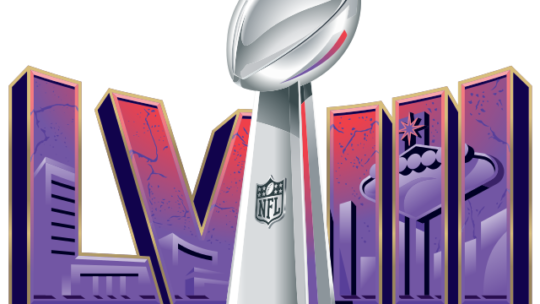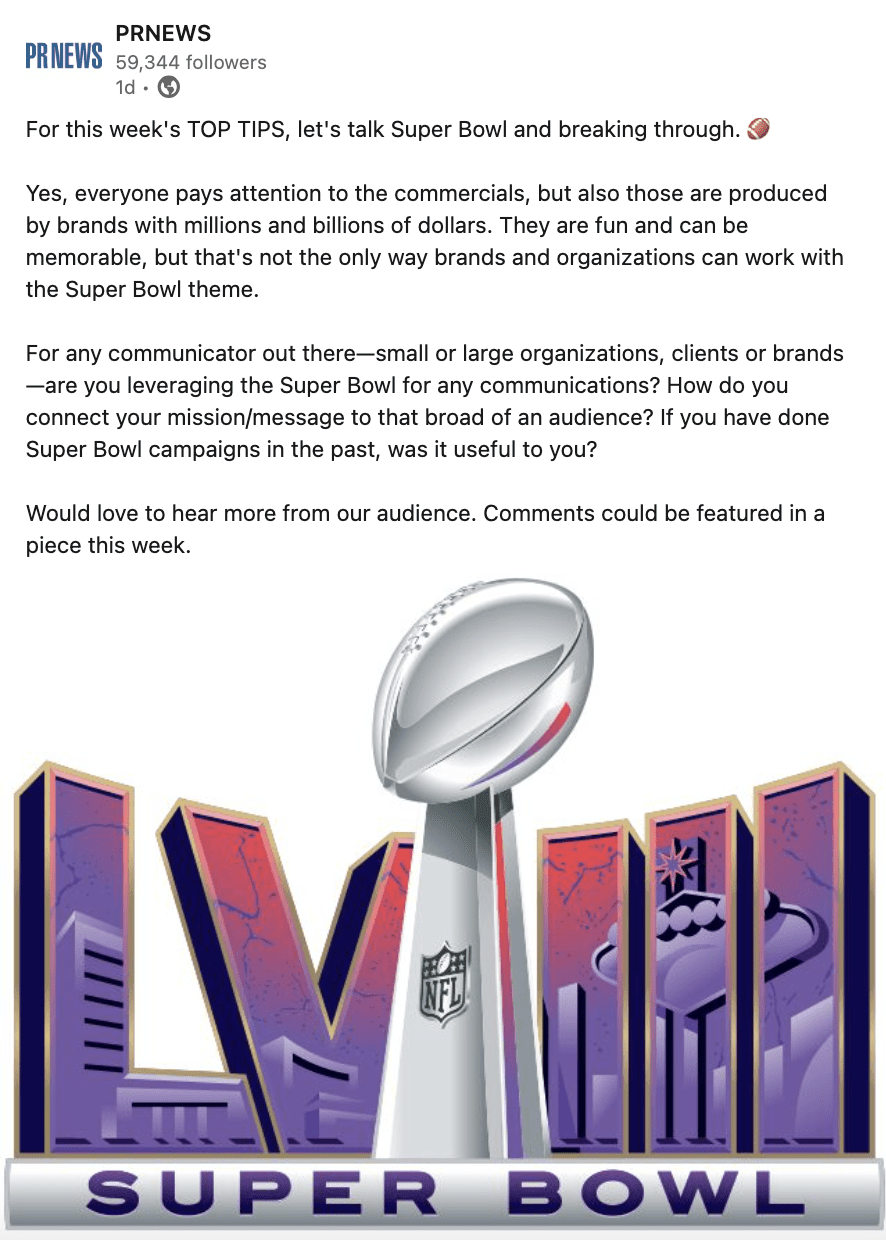
Most people do not think of an airline when they think of football. However, this week United Airlines debuted a teaser for a Super Bowl ad tying the two together.
United will feature a full campaign on Super Bowl Sunday starring Kyle Chandler, also known for his iconic role as Coach Eric Taylor on the beloved football drama of the mid-to-late aughts, “Friday Night Lights.” Chandler introduces a discussion on fans and belief in regards to the big game, and notes that if you do book your flight to the big game ahead of time—out of pure commitment to fandom, United is guaranteeing no change fees to flights—ever again.
This prompted a practical PR question when it comes to brands and organizations trying to decide when hitching their wagon to a large-scale pop culture event. How can one decide to enter the conversation—especially as an outlier—and appeal to that broad of a base (such as the Super Bowl audience)?

PRNEWS received some great examples and lessons for communicators in response.
KPMG and the Gaming Audience
KPMG hosted its second annual LinkedIn Live leading up to the Super Bowl with KPMG’s national sports and gaming leaders, Rick Arpin and Shawn Quill, to weigh in on trends in the industry and reach a wide audience.
“The legalization of sports betting along with deal activity in the space and media continue to be evolving trends,” says Terra Kliwinski, senior associate, corporate communications, KPMG. “These factors coupled with the location of the Super Bowl in Las Vegas this year made for a timely conversation.”
KPMG utilized its social presence along with digital tactics like a LinkedIn poll (their highest engaged poll to date) to garner an audience for the live conversation. It found there was a diverse audience among KPMG employees, clients, media/reporters, and followers of our leaders on these topics who are interested and willing to engage in these conversations.
Kliwinski provided these queries to decide if your brand should align with a large-scale event.
- Is your topic newsworthy?: Aligning your campaign with a topic that relates to a timely event can help draw attention and open up new avenues of conversation.
- Third-party participation: Does your campaign fit into any third-party groups or initiatives? Consider including a third-party group that could help give additional credibility to your discussion and engage a broader audience.
- Participant buy-in: Will all participants within the campaign promote to their audience as best as possible? Utilizing marketing alongside communications tactics will enhance the overall success of the event.
Healthcare and Sport
Dawn Fallon, Founder and CEO New Dawn Communications, has had many years of experience with healthcare PR. She’s also served as a Senior VP, Health Practice Leader at Makovsky, Group Director at Real Chemistry and Senior VP, Commercial Lead, LifeSci Communications.
Her experience has shown that the Super Bowl provides some surprising opportunities to pitch media outside of sports.
As part of a public awareness campaign around obesity, her team was tasked with generating media coverage around a former NFL player, Jamie Dukes, who had undergone gastric banding surgery for his obesity. Fallon’s client, Johnson & Johnson, selected Dukes as a national spokesperson to best showcase his obesity journey and his success with the REALIZE Adjustable Gastric Band.
Fallon says a media blitz around Super Bowl time proved to be just the ticket.
“We were able to secure some national media hits as well as 15+ radio sports interviews with Dukes since he was onsite [at the event] as an NFL Network TV correspondent. Dukes focused his interviews on the importance of recognizing that obesity is a disease, his success with the REALIZE Band, and his commitment to eating healthy.”
Fallon believes it’s important to think outside the box when it comes to media relations, especially around Super Bowl time.
"Journalists are bombarded with pitches every day,” she says. “We made it a why now story by leveraging the fact that Super Bowl Sunday often involves binge eating a lot of unhealthy foods."
Enticing the Female Audience
According to an article by Forbes, women comprise 46% of the Super Bowl viewing audience on average. That’s a big opportunity for organizations looking to deliver a message to the female audience. No longer can campaigns simply think of male viewership.
Priscila Martinez, Founder and CEO of The Brand Agency says that yes, the Super Bowl is an incredibly crowded space with large budgets, but if you want to cut through the noise, you need a creative team that can find unique angles.
“Legacy events rule the days leading up to the big game so a better investment for a brand looking to dip their toe into their first Super Bowl would probably be a creative promotion that has PR legs,” Martinez says.
For example, many of this year’s lifestyle brands are looking to the Taylor Swift and Travis Kelce hysteria to create programs to reach consumers.
“It's a smart way to own female consumers during a weekend that typically skews heavier male,” she says.
Overall, activating at the Super Bowl can require a large budget and it comes with heavy competition. A smarter alternative can be creating campaigns that tap into the zeitgeist to effectively cut through the noise.
Nicole Schuman is senior editor for PRNEWS. Follow her @buffalogal
